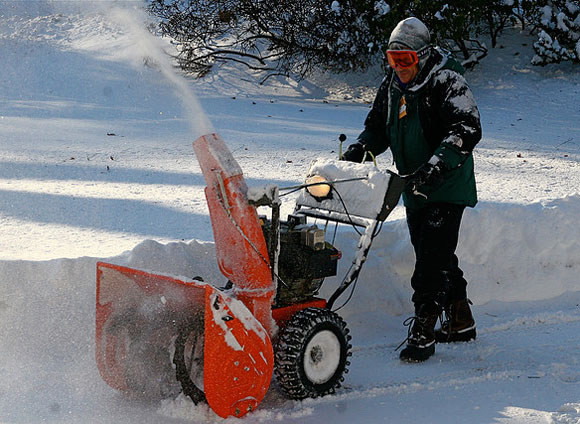
The Northeast is digging out today from record snowfall and people are putting their snowblowers and snow shovels back in action. Here are some tips for digging out from the snow safely and what to do in case you get hurt.
1. Assess the situation
Do you truly need the leave the house today? Can you work from home? If you’re in an area that is warming up, shoveling softer snow be much easier in 24 hours, conversely if you are expecting freezing conditions the snow can become even more hard packed so clearing it now might be your best option.
How much snow has accumulated? Are you prepared for the work involved to remove it and do you have the right tools?
2. Warm Up
Shoveling snow is at the least extremely strenuous and possibly the toughest workout you’ll have all week. It will place strain your back, arms, shoulders, hands, core and legs and use many muscles that never really get much use.
Make sure you properly stretch and prepare yourself for the workout of shoveling snow. Eat a proper meal and drink plenty of fluids before, during and after shoveling the snow.
3. Check Your Equipment
Is your shovel up to the task? Check for cracks in the shovel handles and make sure the head is properly attached.
Hopefully you’ve assessed the condition of your snowblower in preparation for the first snow, but if you haven’t make sure you check to see that its in proper running condition. Is it fueled? Is the blade attached securely and all cables and switches are operating properly? If it’s not firing properly check the plugs and fuel lines.
4. Watch for under snow (invisible hazards)
Maybe you forgot the new firepit that was left out this winter or a recent border you installed. When shoveling and especially using a snowblower, err on the side of caution when maneuvering around obstacles.
5. Take Breaks
As mentioned above, digging out is extremely strenuous so take multiple breaks and don’t over extend yourself. You’ll finish the job faster and in better condition.
6. Injuries
Did you tweak your back or shoulder? Immediately take a break and head inside and get warm. Relax and apply ice to the injured body part to reduce swelling. It’s probably best if you stop digging out for the day and assess what your body is telling you. A little snow is no reason to injure yourself.
If you find you’ve suffered an extreme injury such as a severed finger or extremity (snowblower injury), get help immediately. Apply sterile bandages and direct pressure to the injury. Try to locate the severed body part and place it in a ziplock bag and put it on ice in a cooler. Keep this cooler with the injured patient and get to the hospital ASAP!
Hopefully you won’t get as far at step 6 but by respecting the process and the power tools involved, you’ll be able to remove snow safely and quickly.
photo: muffet

No Comments